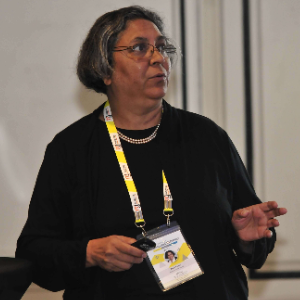Title : RNA-binding protein caught moonlighting
Abstract:
The N-methyl-D-aspartate (NMDA) receptors are important in neuronal development, synaptic plasticity, long-term potentiation, and neuronal cell death. NMDA receptors consisting of NR1 and NR2B subunits are a target of alcohol and are believed to play a role in the development, at least in part, of alcohol dependence and withdrawal syndrome. The NR1 subunit is the functional subunit, as NMDA receptors do not form without it. Chronic alcohol exposure increases NR1 polypeptide levels in cortical neurons through post-transcriptional mechanisms. A closer scrutiny of alcohol-mediated alterations of cellular processes revealed a switch in the expression of NR1 splice variants at the mRNA and protein levels; as well as; an increased half-life of NR1 variant mRNA. Neurons begin to show significantly increased expression of the NR1- 4a variant – a variant that has maximum cell surface expression and thus makes neurons more vulnerable to excitotoxicity. Inhibition of new protein synthesis in the presence of alcohol reversed changes in NR1 mRNA half-life suggesting a changing protein landscape within neurons following chronic exposure to alcohol. Scanning of deletion mutants spanning the NR1- 4 mRNA 3’-untranslated region identified a small region of 50 nucleotides that interacts with three RNA binding proteins (RBPs) in vivo and in vitro. One RBP is an alcohol-sensitive protein and its protein levels as well as binding to RNA were significantly increased in chronic alcohol-exposed cortical neurons. This protein was purified and identified by mass spectrometry as beta subunit of alpha glucosidase II (GII?) – a protein normally associated with the ER membrane. GII? binds to the GII? subunit to constitute heteromeric alpha glucosidase II (GII), which participates in the folding of nascent proteins in the ER. Data will be presented with regard to how changing the inner landscape of neurons following exposure to chronic alcohol is self-destructive or self-repairing.
Audience take away:
Explain how the audience will be able to use what they learn?
1) Can use the information in teaching neuroscience and biochemistry of proteins; 2) Can associate the information with “unexplained” ER stress and/or retention of proteins in ER; 3) can think of RNA-protein interactions as “hot spots” for novel therapeutic interventions in alcohol addiction
How will this help the audience in their job? Is this research that other faculty could use to expand their research or teaching? Does this provide a practical solution to a problem that could simplify or make a designer’s job more efficient? Will it improve the accuracy of a design, or provide new information to assist in a design problem? List all other benefits.
1) Yes, other faculty can use this research (such as neurodegenerative diseases, neuropathy) to expand their research, 2) We are currently testing in vivo how RNA-protein interaction inhibition affects alcohol consumption. So yes, if we have success in these experiments then certainly RNA-protein interaction sites can become target of novel sites for developing targeted medicine.




